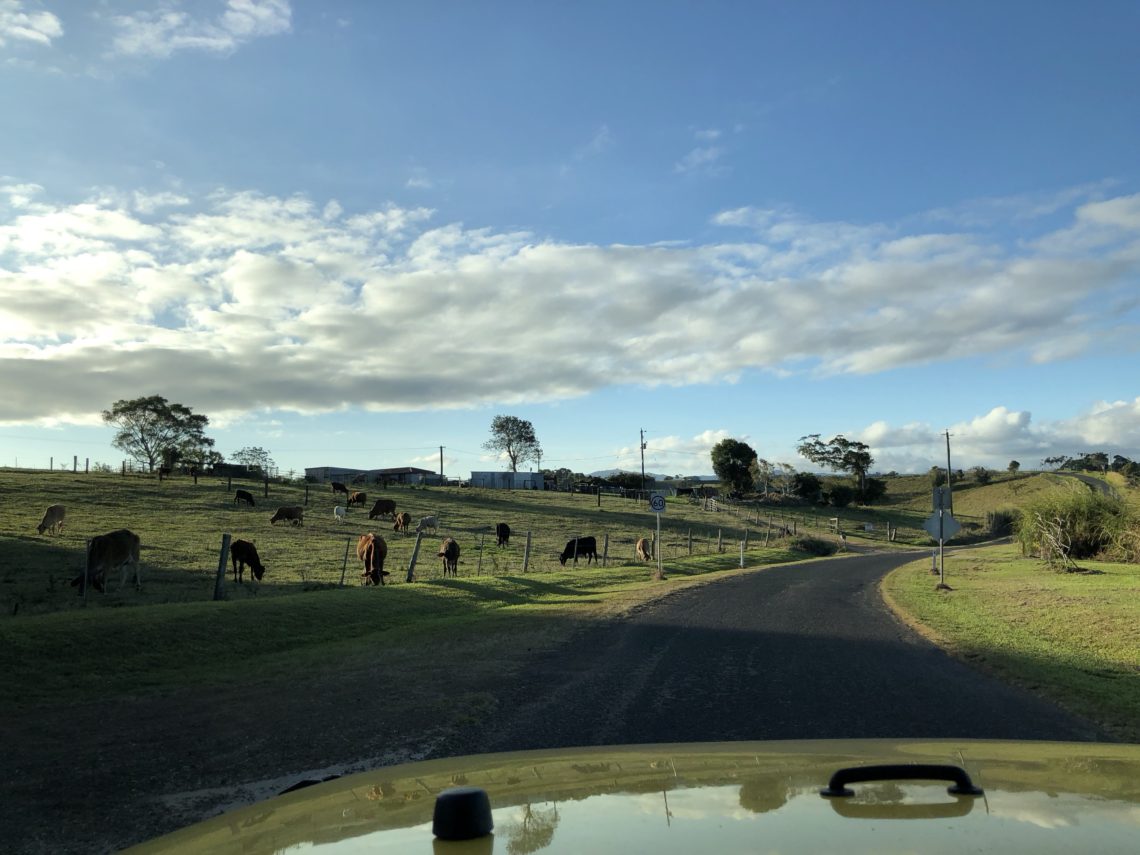
Atherton Tablelands
The Atherton Tablelands is an area just west inland of the Cassowary Coast, where there are rolling green hills and big blue skies, lots of flourishing farmland, cows, fruit trees, coffee plantations, small towns boasting b&bs, cafes, and fish & chip shops, and the big draw for us – cheese, coffee, and chocolate shops selling wares all crafted from local cows and locally grown produce and cocoa and coffee. As if that wasn’t enough there are also countless waterfalls, freshwater lakes and rivers, rainforest walks, and even local Aussie legendary creatures like the duck-billed platypus.
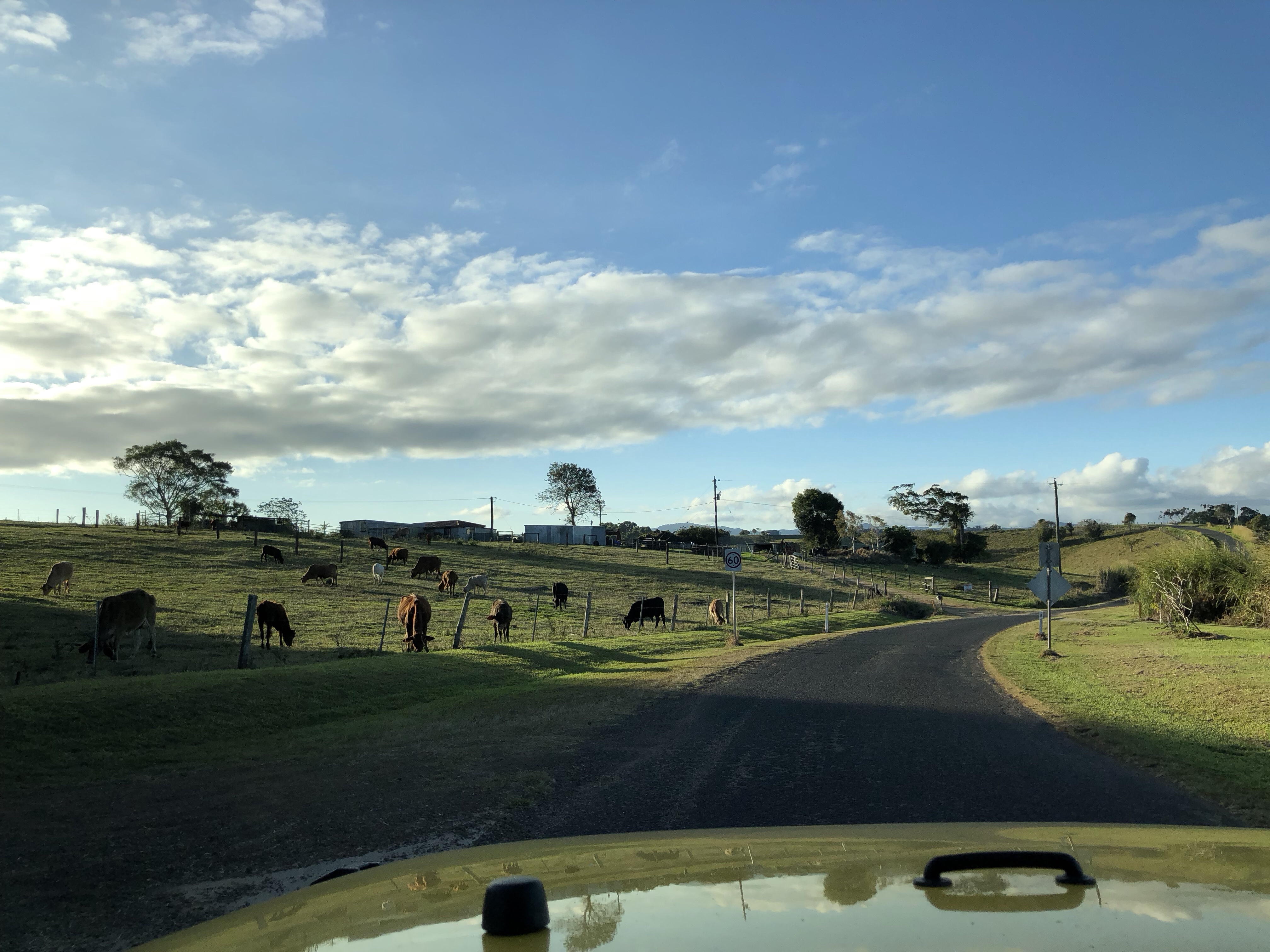
Our first stop in the Tablelands was Mareeba Coffee Works, a combination cafe-tasting room – museum devoted to coffee, coffee liqueur, and chocolate (all locally grown and or made). We were in heaven with unlimited tastings of all of the above for just $19 per person.

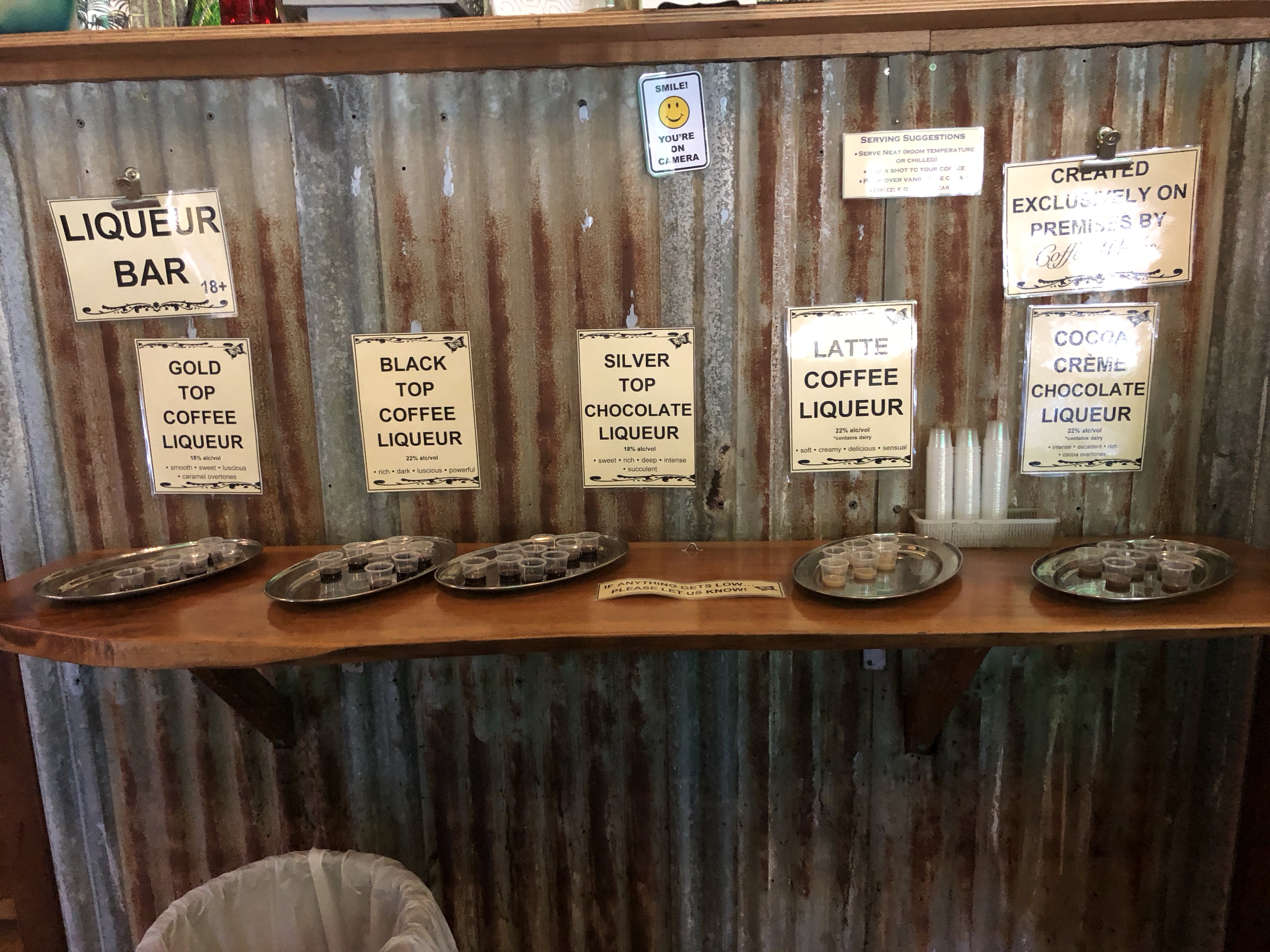
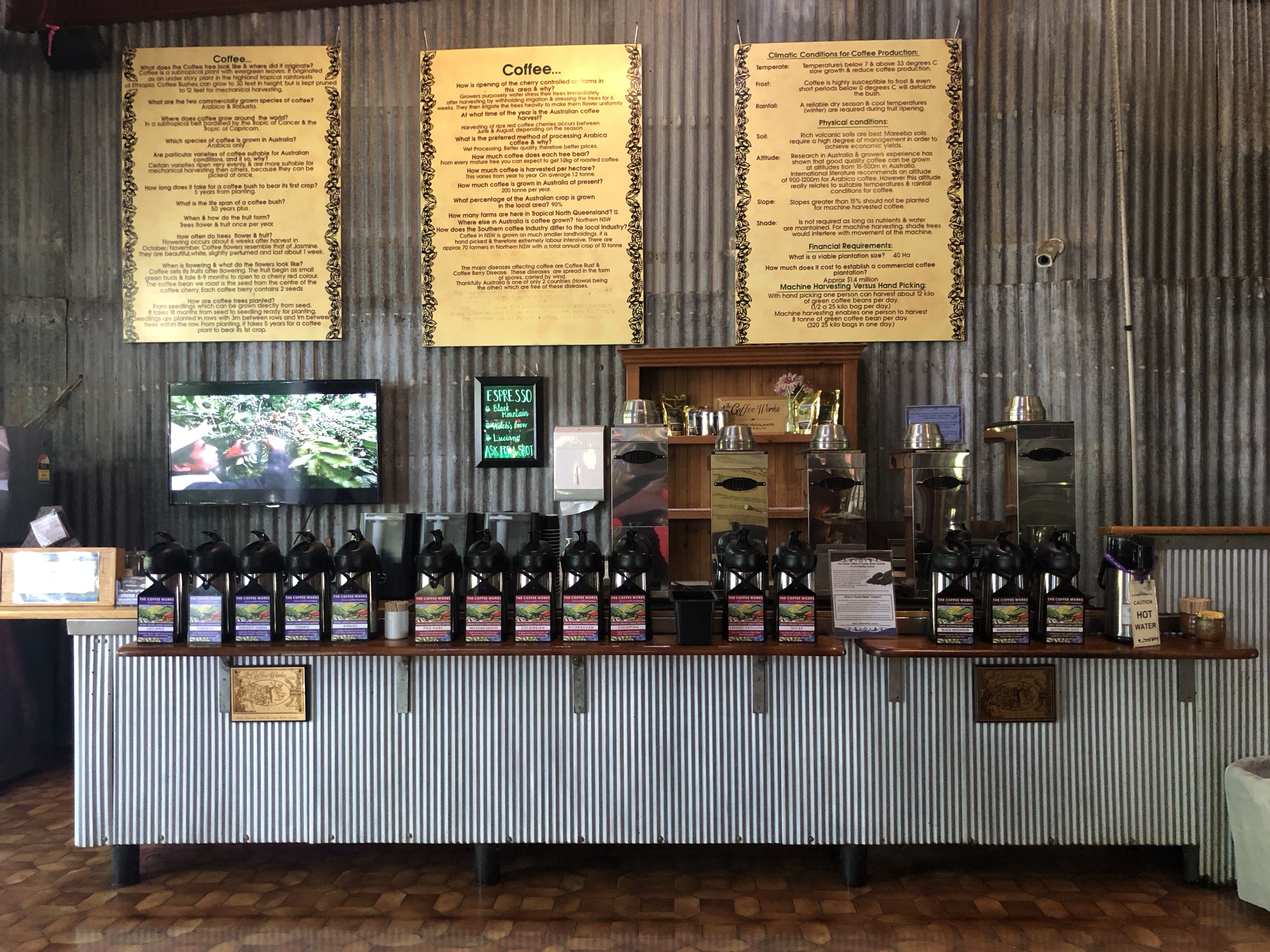
In the back of Coffee Works are a few coffee trees where you can check out the immature addictive beans up close. Most of Coffee Works coffee is now imported (locally blended and roasted) although they do have a few local plantations still in Queensland growing beans. We had no idea but the harvest from one coffee tree is only enough for one kilo of coffee! The scale of these operations are huge and Australian labour and resources are just too expensive to grow coffee to keep up with the other coffee-growing areas where the climate is better and labour cheaper. We bought a bag of Queensland-grown beans, at over twice the price of imported beans from the grocery store.


Also in the back at Coffee Works is the aforementioned museum – which was just so completely beyond our expectations. We’re sort of into coffee, in that Nick orders our beans online and we roast them ourselves, tracking the different beans and roasts in a spreadsheet, and we make espresso coffee at home with our Breville and on the road with a Bialetti, but the founder of Coffee Works was REALLY into coffee. This museum boasts that its the world’s single largest collection of coffee-related artifacts and after visiting we’d both agree. The collection is also very well presented with lots of informative signs, audio tour, displays, etc. We could have spent more time there!


After Coffee Works we were off to Gallo Dairyland, a dairy (obvs) with lots of locally made cheeses, spreads, and more chocolate. It was close to closing time so we only had a few minutes to nip in, grab some cheeses, and say hi to the friendly staff before heading on to our campsite at Lake Tinaroo.

We liked Lake Tinaroo so much that we opted to stay for four nights – grassy sites right on a lovely peaceful freshwater lake, lots of bird life, trees to set up the hammock, pink and purple sunsets, and a kayak for hire…we were in paradise.
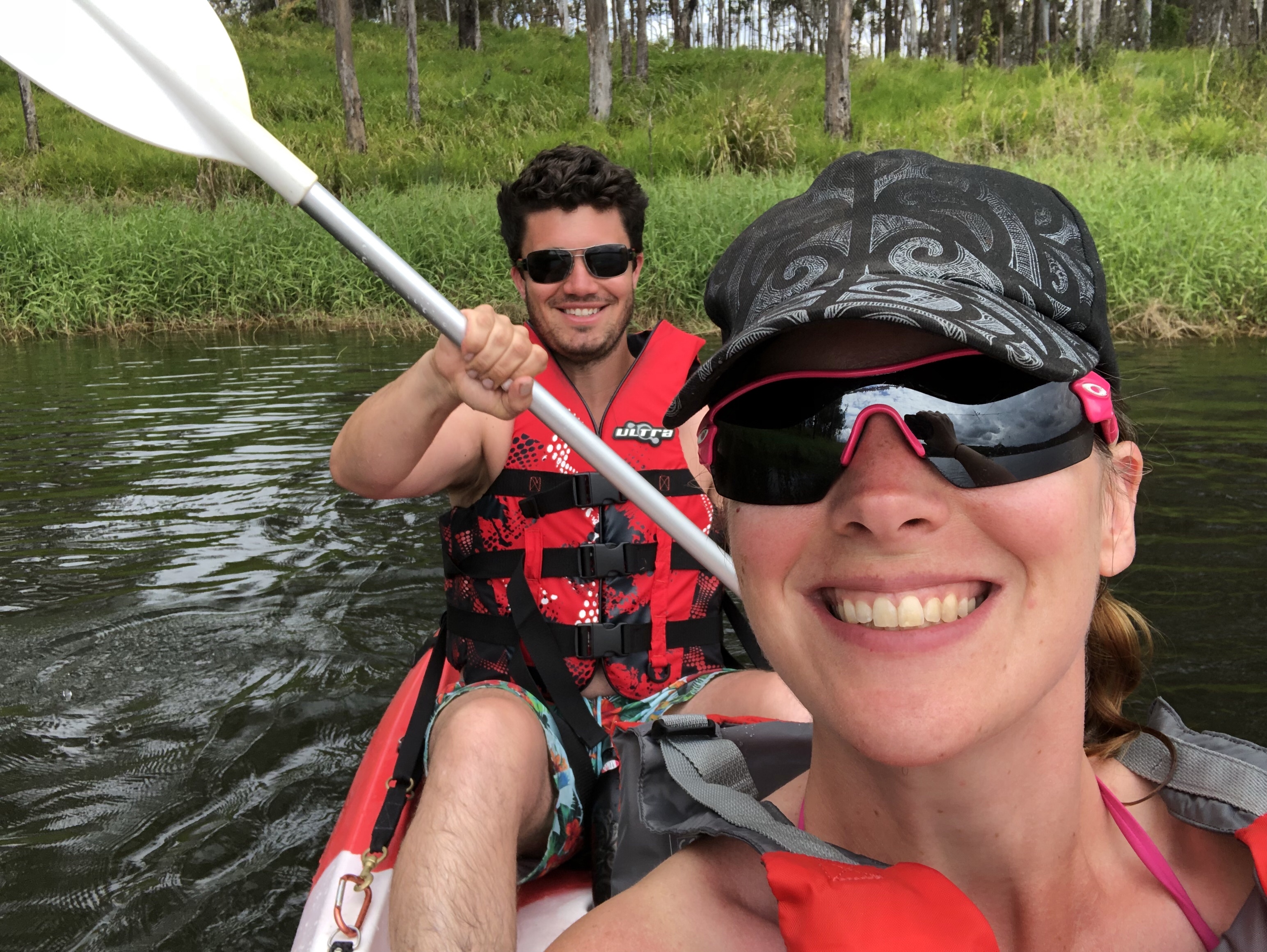

We also took the opportunity to dig into some of that amazing local Tablelands produce!
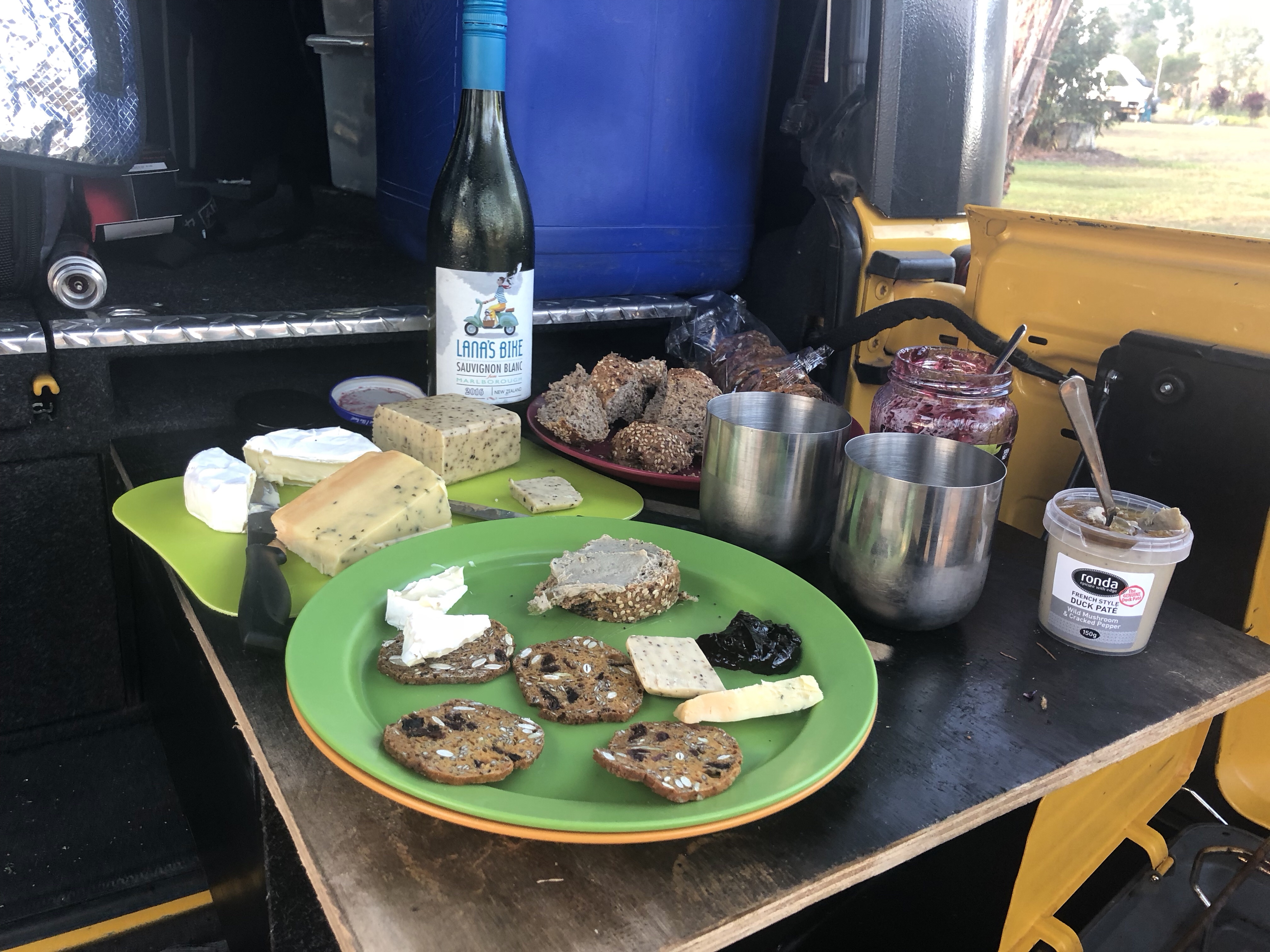
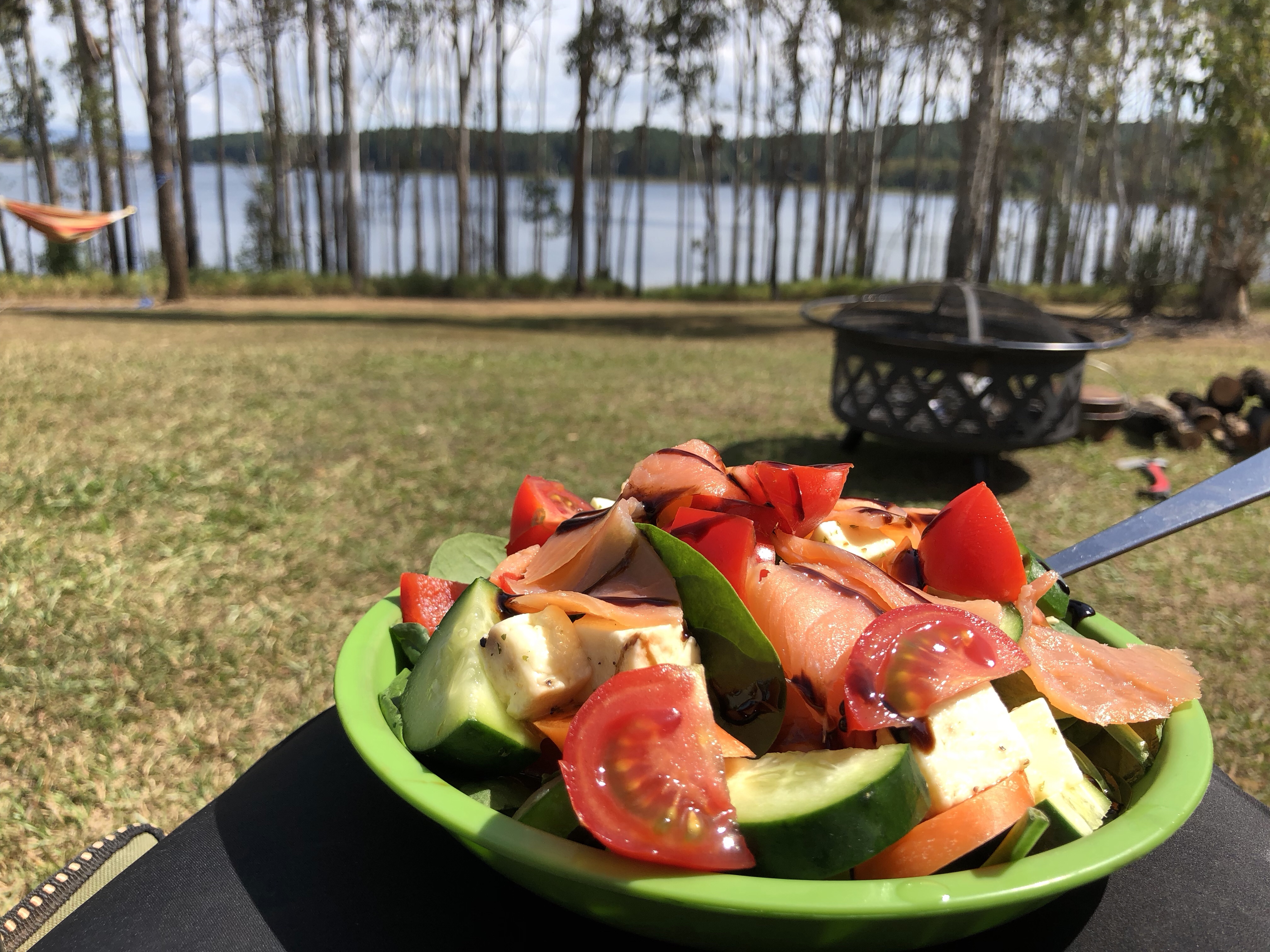

After four nights on Lake Tinaroo though we were getting restless and ready to hit the road again (that travel bug is voracious!). On our way to Cairns we embarked on the Tablelands “Waterfall Trail” which had been recommended by a Jeeper friend of ours, Di – well worth the detour. Here are a few of our favourites along the way…
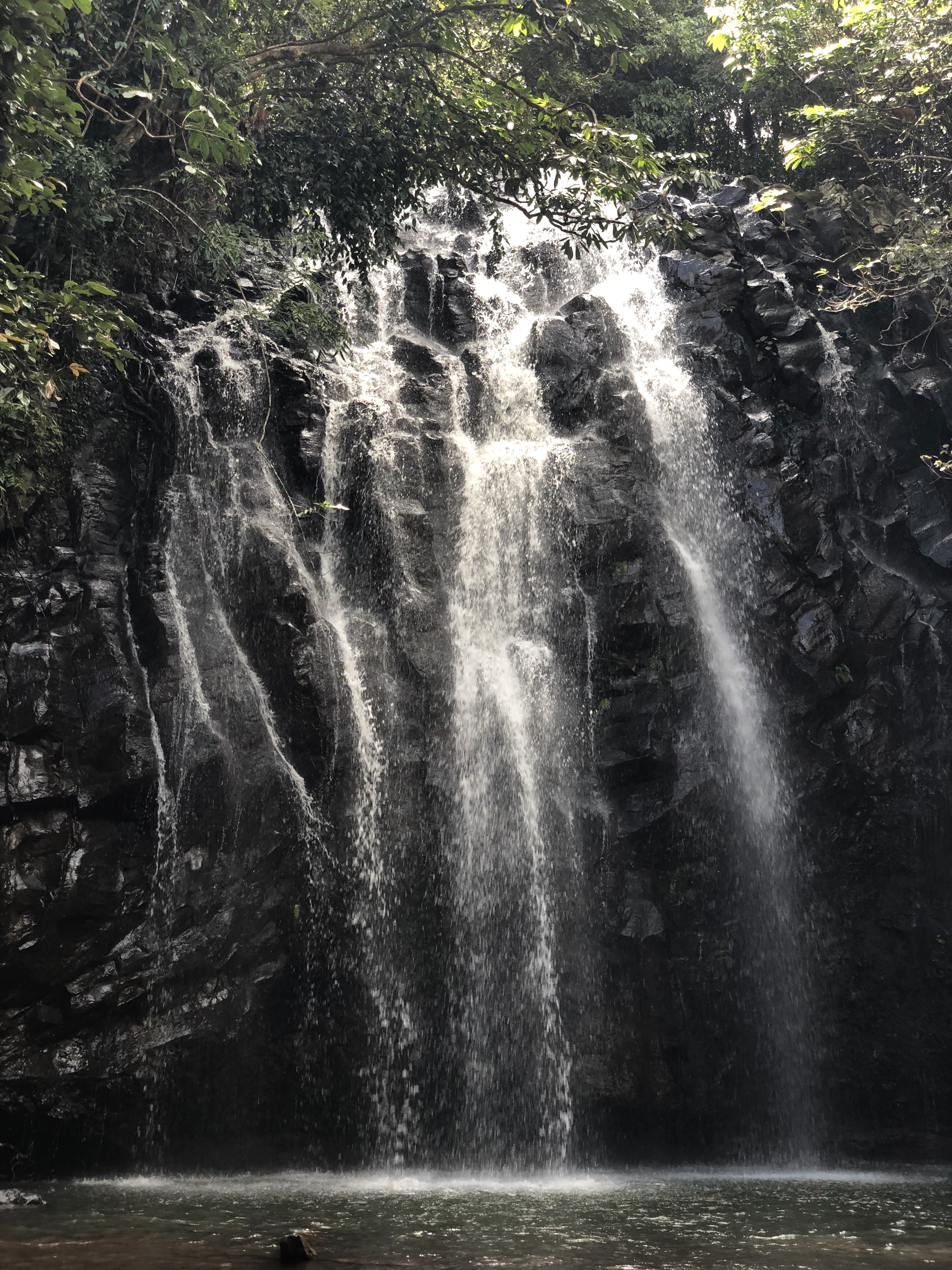


We also stopped to check out the platypus viewing platform and managed to catch a glimpse of a platty, super exciting for us, we love seeing wildlife out in its natural habitat, and it’s pretty rare to see a platypus! Did you know that among other ridiculous fun facts, they are the world’s only venomous mammal?
Finally it was off to Cairns for a night of luxury and fine food (still in shorts and short sleeves and sandals – it is Cairns after all) for Nick’s birthday, before we tackle our next super remote destination and the northernmost tip of Australia: Cape York!
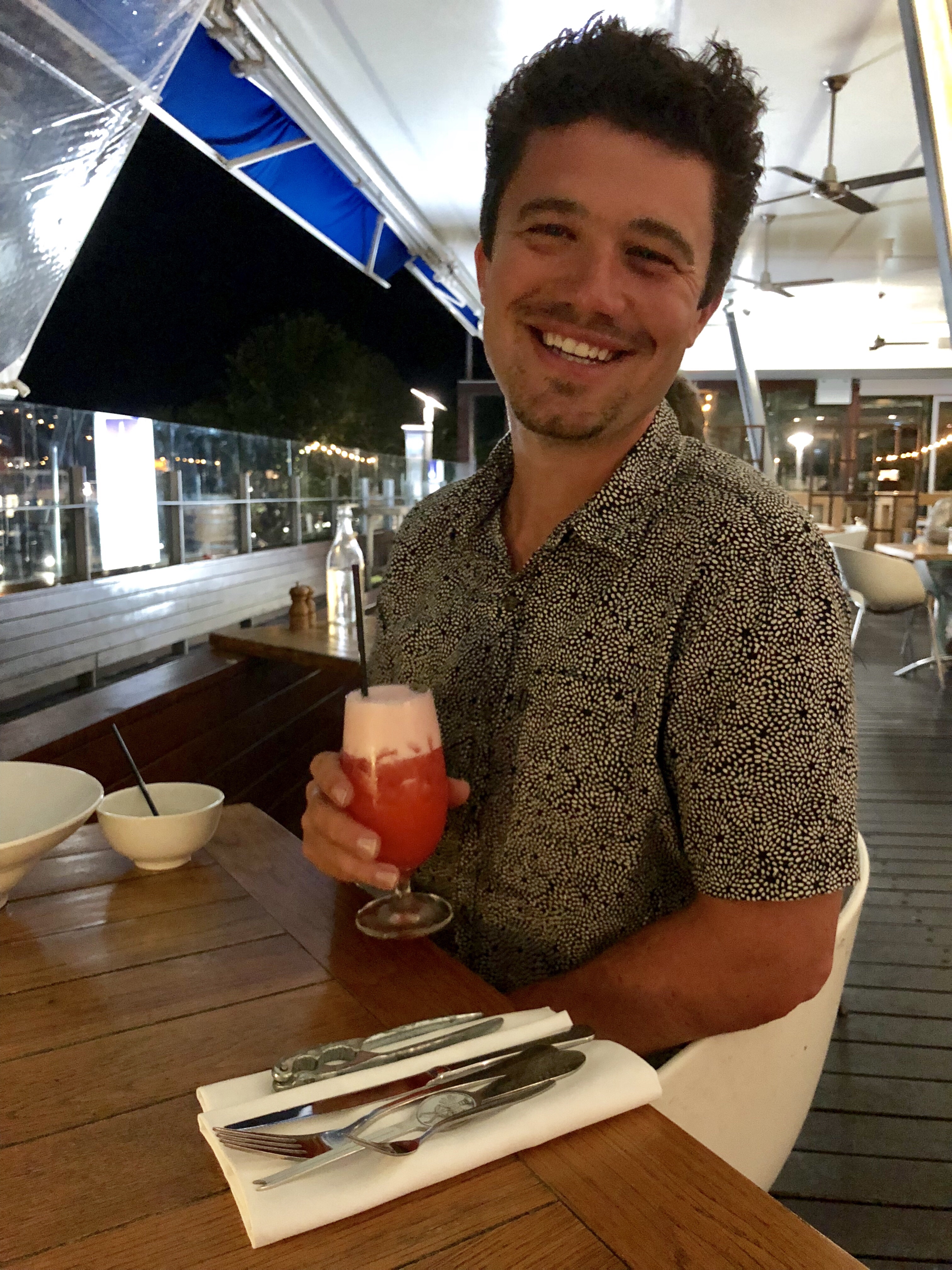



MVP: Our new hammock Nick found in Cairns for $35 was an absolute joy to lay in while we stayed at Lake Tinaroo – rocking back and forth reading my book – having the occasional nap – absolute winner and definitely worth the space!
So, Where Exactly Is This?
Here’s a screenshot of this leg of the journey from WikiCamps! The red is what we’ve already covered, and the green is what was featured in the post you just read. You can also follow us live at this link – our satellite device pings our shared map frequently.
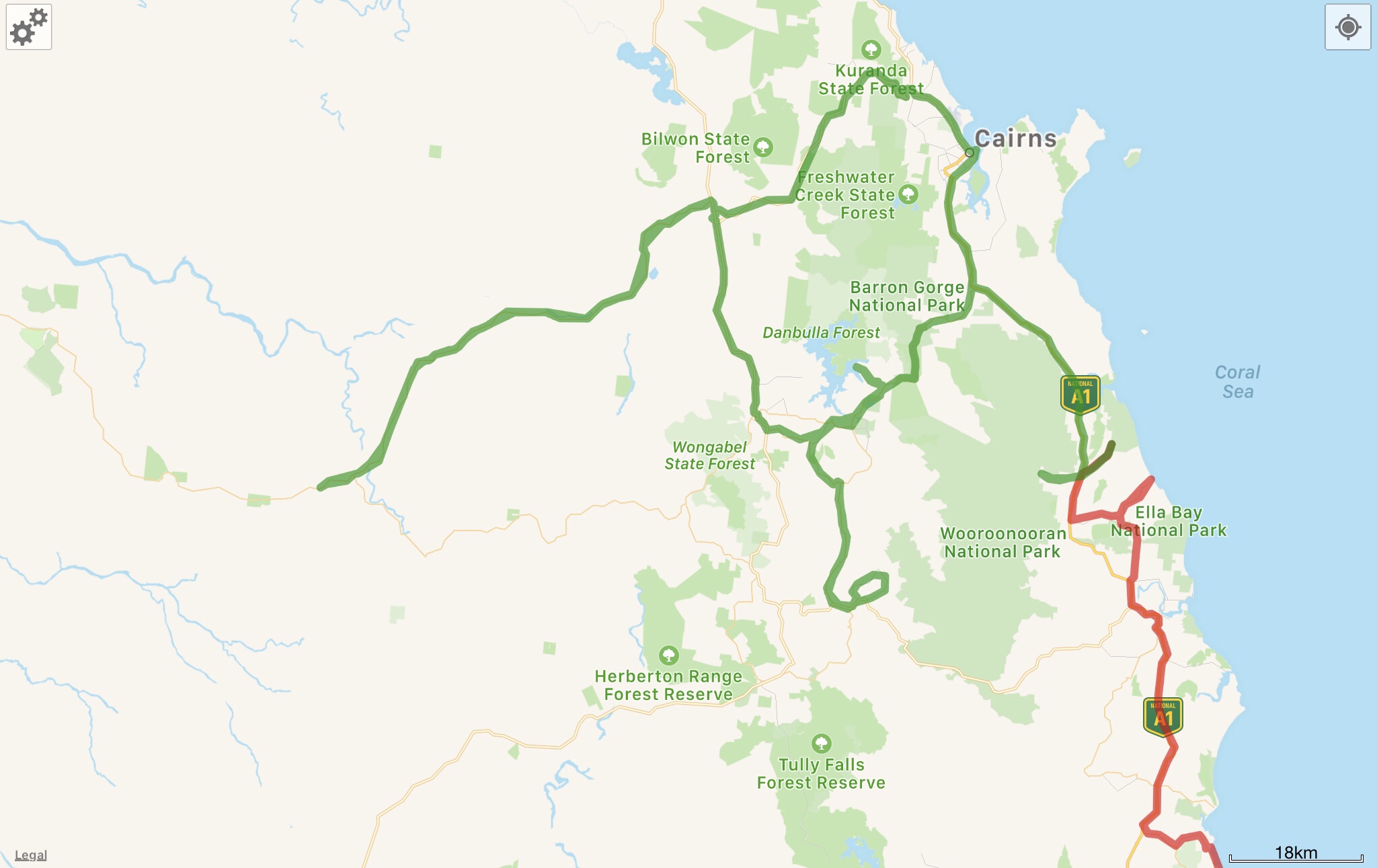
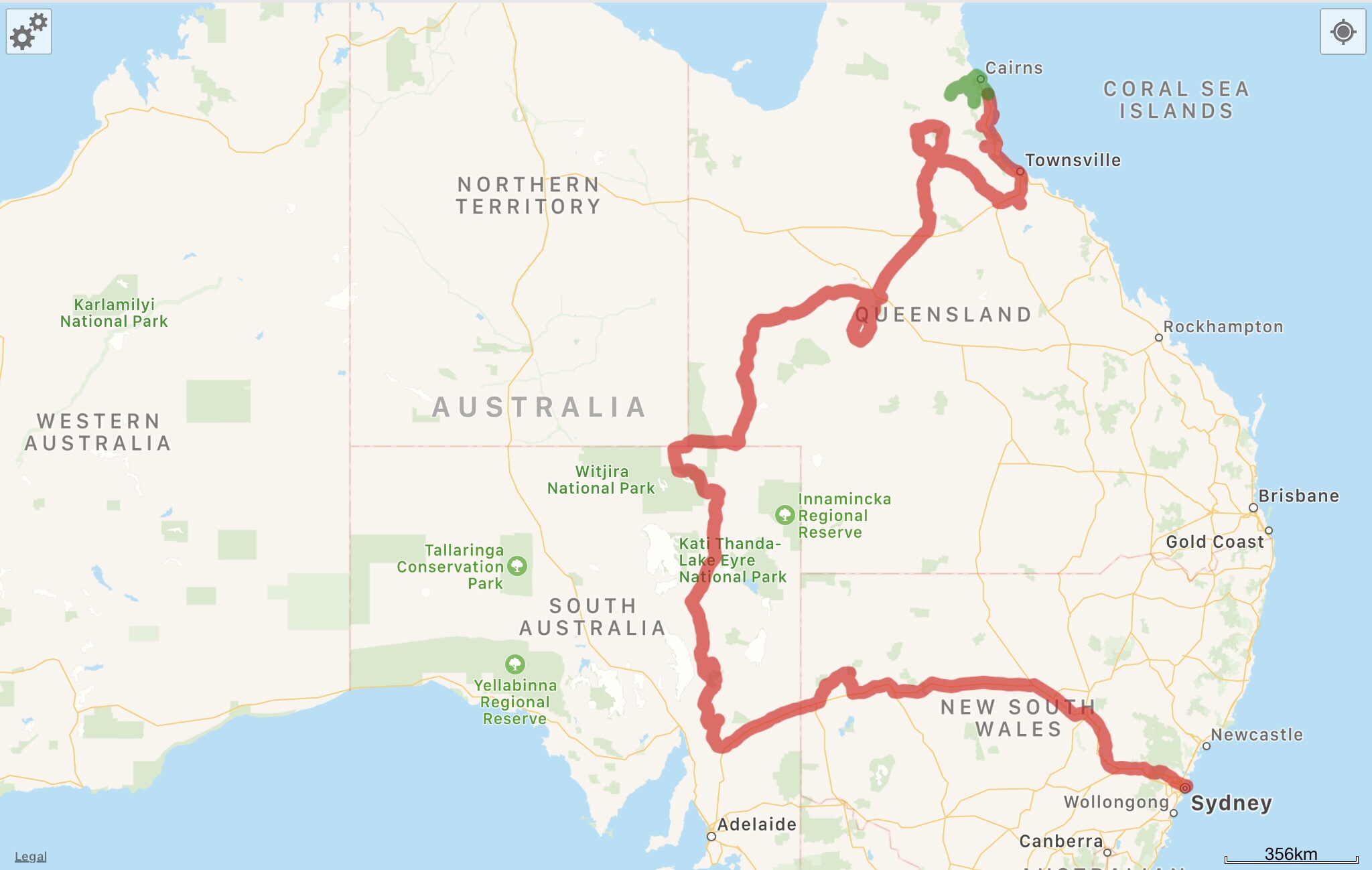
Asdf

